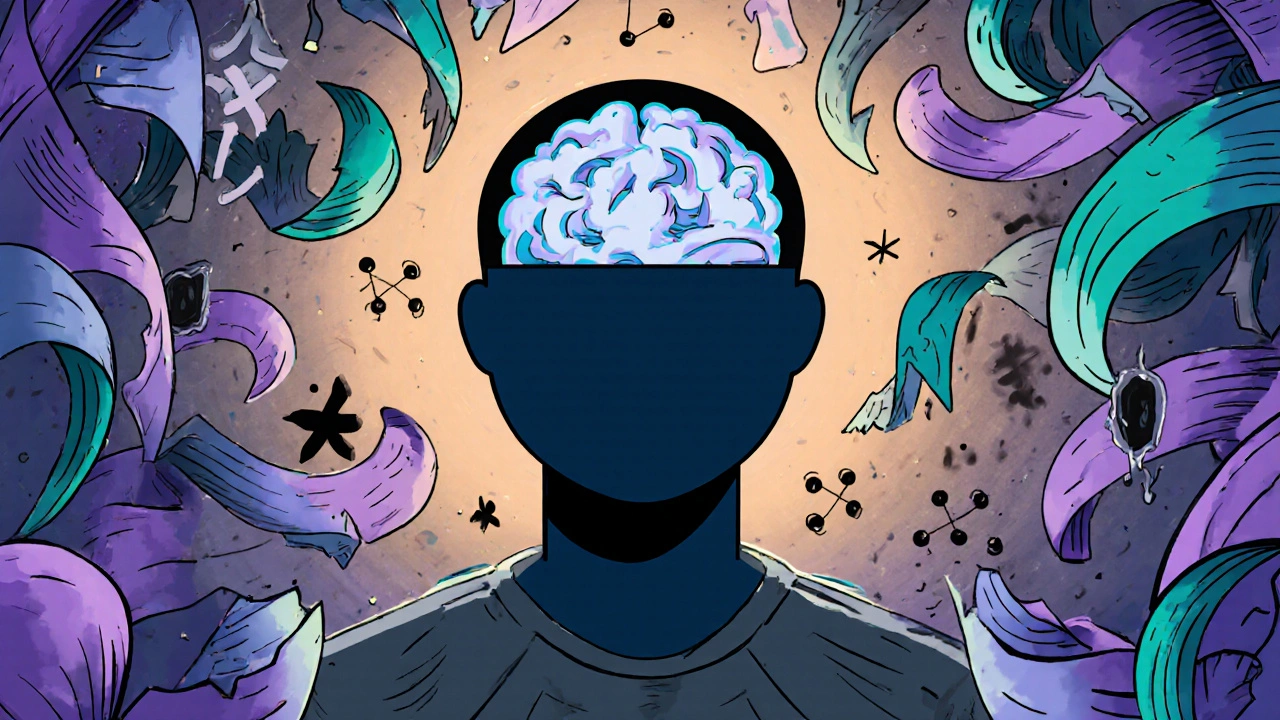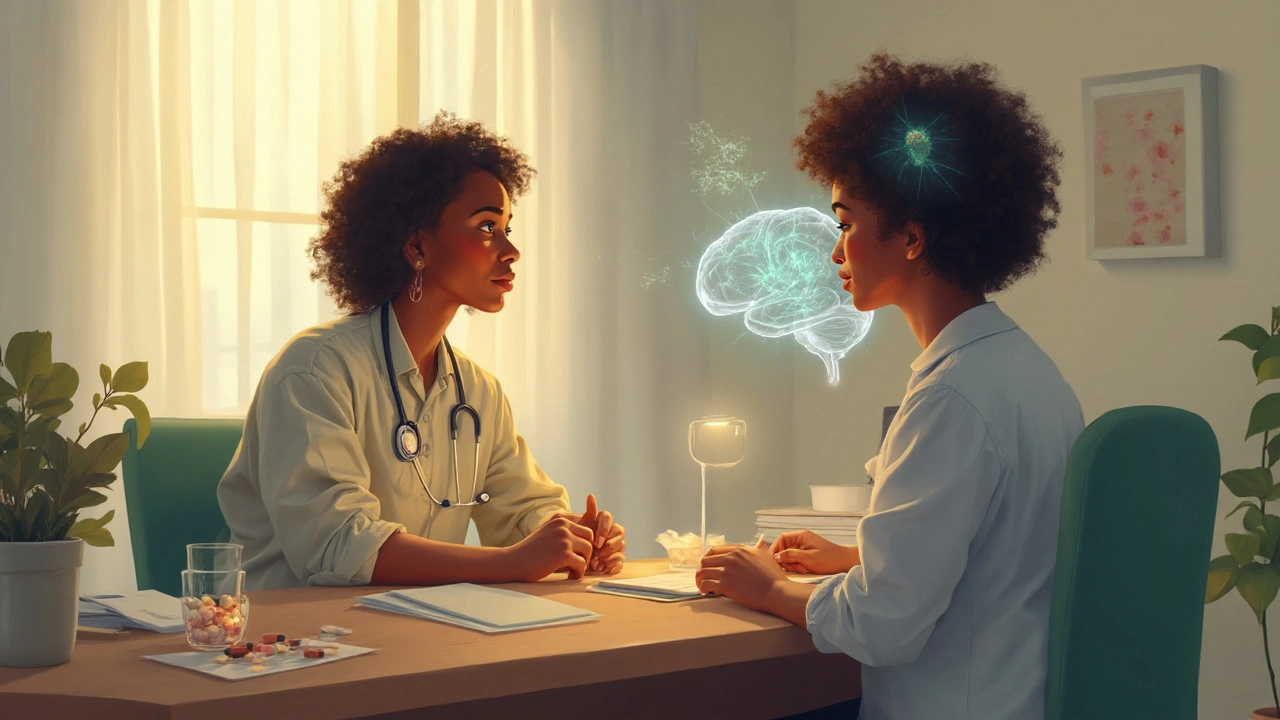Mental Health: Practical Help for Anxiety, Depression, PTSD and Bipolar
Feeling like your mood, sleep, or stress runs the show? You’re not alone. Mental health often improves fastest when we use a few approaches at once: therapy to change habits and thinking, medication to stabilize chemistry, and better sleep to help the brain recover. This page pulls together useful, doable steps so you can act right away.
How therapy and medication fit together
Medications like escitalopram can reduce symptoms such as anxiety and low mood by changing brain chemistry. Therapy works on the other side: habits, thinking patterns, and coping skills. For example, cognitive behavioral therapy (CBT) teaches practical tools to handle panic or negative thoughts, while medication makes it easier to use those tools. If you have bipolar disorder, therapy helps spot mood triggers, keep routines and improve relationships — all important for staying stable between episodes.
When starting medication, track side effects and mood changes. Tell your prescriber what you notice and ask how long to expect before benefits start. Also ask about combining therapy with meds; that combination often gives better results than either one alone.
Sleep, REM and healing from trauma
Sleep isn’t just rest — it’s a time your brain processes memories and emotions. REM sleep in particular helps the brain sort through emotional experiences, which matters for PTSD and panic. Improving sleep can reduce the intensity of intrusive memories and make therapy more effective.
Try a simple sleep plan: keep a consistent bedtime, avoid screens an hour before bed, cut caffeine after mid-afternoon, and make the bedroom cool and dark. If nightmares or nightmares-related stress keep you awake, tell your therapist or doctor — targeted treatments and sleep-focused therapy can help.
Practical steps you can take today
1) Track mood and sleep for two weeks. A quick journal helps your clinician see patterns. 2) If you’re weighing medication, ask about generic options and common side effects. 3) Look for therapy options: community clinics, teletherapy, sliding-scale therapists, or support groups can cut costs. 4) Create a short safety plan: emergency contacts, calming steps, and who to call if you feel unsafe. 5) Use pharmacists and comparison tools to find lower-cost meds — small savings add up.
Want quick reads? Check our posts on combining therapy with escitalopram, therapy for bipolar disorder, and how REM sleep helps heal trauma. Each article gives real tips from people who’ve been there and clear next steps you can follow. If you’re unsure where to start, reach out to a primary care provider or a mental health clinic and mention you want combined care: therapy plus medication and sleep support.
Small actions matter. Try one change this week — a consistent bedtime, a therapist call, or a medication review — and see how it shifts things. You don’t have to fix everything at once; steady steps add up.
Explore how depressive disorder fuels suicidal thoughts, spot warning signs, and learn evidence‑based steps to keep at‑risk individuals safe.
Learn how the flu affects your mood and discover practical steps to stay positive during recovery, from gratitude practices to sleep tips and when to seek help.
Explore how antidepressant medication works, its main classes, benefits, side effects, and how to combine meds with therapy for effective depression management.
As someone who understands the importance of mental health, I cannot stress enough how vital therapy is in combination with Escitalopram treatment. By combining the two, individuals can tackle both the biological and psychological aspects of their mental health struggles. Therapy helps in addressing the emotional and behavioral patterns, while Escitalopram aids in balancing the brain's chemistry. It's essential to remember that a personalized and holistic approach to mental health is key to achieving long-term progress. In my opinion, therapy and Escitalopram together offer a more comprehensive and effective way to improve one's mental well-being.
As someone living with bipolar disorder, I've realized that therapy plays a crucial role in managing my condition. It helps me understand my thoughts and emotions better, allowing me to navigate through the highs and lows of my disorder. Through therapy, I've learned effective coping strategies and developed a strong support system. It has also helped me improve my relationships and communication with others. Without a doubt, therapy has been a vital tool in my journey towards a more balanced and fulfilling life.
As a blogger, I've recently explored the fascinating connection between Rapid Eye Movement (REM) sleep and PTSD (Post-Traumatic Stress Disorder). It turns out that REM sleep plays a vital role in processing traumatic experiences and improving emotional well-being. During this phase of sleep, our brains work to consolidate memories and regulate emotions, allowing us to heal from trauma. Some promising treatments are focusing on improving REM sleep in PTSD patients, to help them overcome their symptoms. So, never underestimate the power of a good night's sleep; it could truly be the key to healing from trauma.





